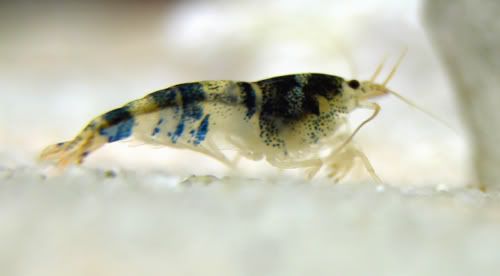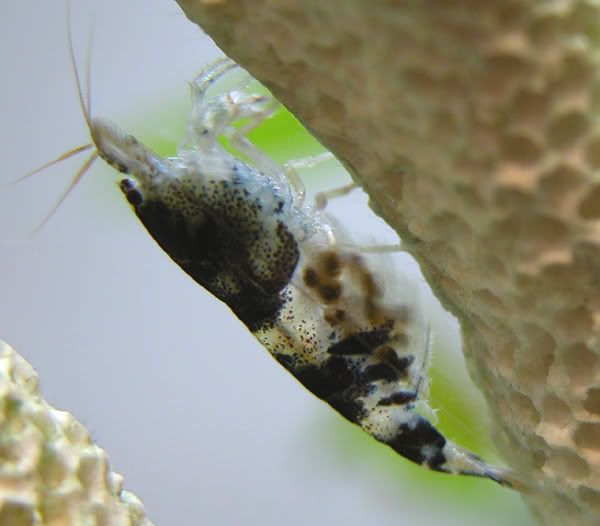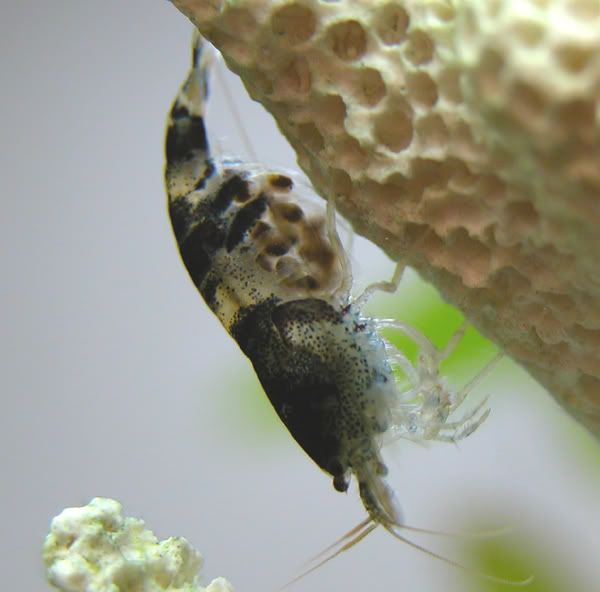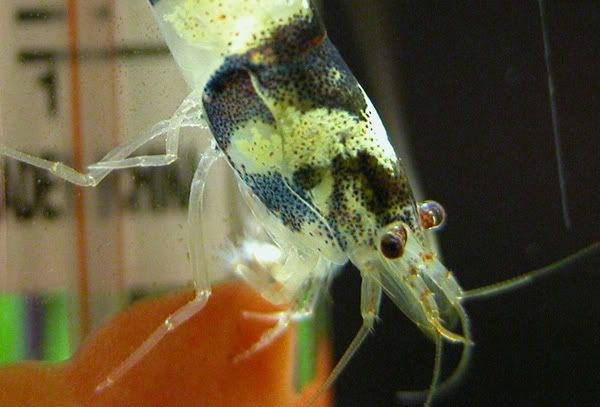Trying my best to keep up.GunmetalBlue wrote:
Hats - where to put them all - sounds like you need an ultra-huge hat rack, Mustafa!I noticed the useful updates though.

Not necessarily. I have noticed quite a bit of variation among imported bumblebees and even among some captive bred populations. Some have brighter colors and some don't. The coloration seems to depend on age, mood and water parameters also.Mustafa, I'm beginnning to seriously think the aforementioned male is a selectively bred cull (as mentioned by Ed) that got thrown in with a shipment of wild caughts.
Got some peat granules in hopes my shrimp will do better. Haven't implemented it just yet - was wondering what approach to take - start out slow with a very small scoop in a media bag in the filter or as peat-treated change water? Any pros or cons one way or the other?
Peat takes a quite some time to show effect on water parameters. I'd go with the peat in the filter option to give the water as much contact time as possible. Pretreating it will only be effective if you have a separate tank/container where you can let the peat and the water sit for days or even weeks. Your water will probably have a slight brownish/yellowish tint to it too after the peat treatment. I don't know where you got your peat, but the cheapest option is to get 100% peat from a hardware store (such as home depot). You get something like 10-20lbs for about $3.00.
Having said that, I don't know if peat is the best option for lowering KH and GH, because I am not sure yet if the organic compounds released into the water by the peat have some negative effect on the shrimp or not.
When it comes to changing the PH downwards, I would not worry too much about sudden changes. It's better to change the parameters as quickly as possible to their preferred parameters than let them live in water that is not optimal for them.I'm fanatic about trying to keep things stable and change things only slowly. The challenge is that either way, the water changes will present some differences from the tank - but since I only change 10 - 15%, I'm thinking it shouldn't be too extreme?
I use the same method as Bo in terms of diluting tap water, except using 10% distilled to my change water (I don't have access to RO).
Try changing that ratio around (90 percent distilled) and see what PH you get out of the mix (mix in a small container first and measure ph to determine the right ratio). If it's between 6 and 7 you're done. If the ph is not where you wanted it, experiment further with the ratio. You don't even need peat or anything else. This could get costly with store-bought distilled water, though. That's why many people buy an RO unit. And don't worry about KH or GH. These guys are used to conditions where KH and GH are close to 0.
I'm afraid to increase the distilled water percentage because I don't want my KH to go too low.
Actually, with these shrimp you *want* your KH to go "too" low.
I know very little about water chemistry but know too low makes water lose its buffering capacity - or am I still not understanding what I'm doing?
As I said above, you do not need to worry too much about buffering if your goal is to achieve low ph water. In most cases buffering (kh) refers to the ability of your water to counter acidifying (i.e. ph lowering) effects of biological processes in your aquarium. There are acid buffers, too, which counter increases in ph, but that's a different story altogether. The main point is that we want low PH water and the KH (i.e. buffering) is just in the way.
I don't really have problems with egg production and my females are producing 20-30 eggs every time. That only happened, however, after I got my PH down to about 7.0-7.2. Before that, my females did drop their eggs a lot. That ph turned out to be not low enough for most offspring to survive, so reproduction has been extremely slow and I was only able to maintain the population of most of my soft water species. It's been a tough battle for me to get my ph below 7. My water comes out of the tap with 0 KH and 0 GH and a PH of 6.8. However, after the water is in the tank the PH shoots up to 7.6 and above (i'm guessing after all the CO2 escapes from the water). With such a low KH my ph should be closer to 7 and should acidify over time pretty easily. But no such luck. I am thinking that the city is adding something to the water which drives up the PH, but which does not get measured with my KH set. KH only measures carbonate hardness, but there are chemicals that are not carbonates that can be used to increase PH.Mustafa, how are the egg production on yours? Is your colony getting off the ground more smoothly since implementing more of what we know about Bumblebees? For myself, it's been understandably slow going; this round, I only see about 9 - 10 eggs on mine.
In any case, I have *just* resolved this issue by starting to use hydrochloric acid (VERY DANGEROUS!!) in my water and I am able to lower the ph down to 6.4-6.6 and it stays there. This is a very strong acid and it eats away on anything that tries to raise ph (and it also eats away on your skin!!!). It also gives off toxic fumes (should handle it with a gas mask), so I really, really do not recommend people going out and buying hydrochloric acid. However, it's totally safe for the shrimp after its added to the water since it reacts to produce hydrogen/hydronium ions (wich lower PH) and chloride ions (NOT chlorine and totally harmless to fish and shrimp). But, as I said, it's not something that you want to use around your house. Maybe some of the commercial, non-phosphate based acid buffers are a better option for hobbyists if you have tried the RO route and your water *still* has a high PH. I have not tried any of them so I can't really recommend anything. But an RO unit should be able to resolve high ph issues by itself in most cases.
So, I am hoping that the reproductive rate of my species that need low ph increases now and that I can finally offer more of them to the public. As you can see, it takes quite a bit more effort to keep and breed the soft water, low ph species, but that's what makes them so interesting....the challenge.
Take care,
Mustafa









